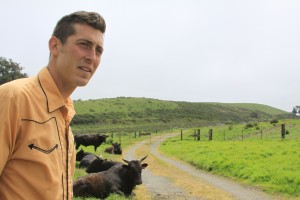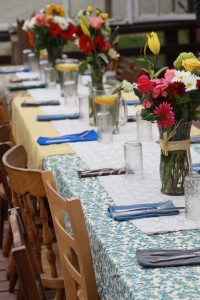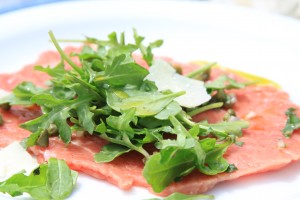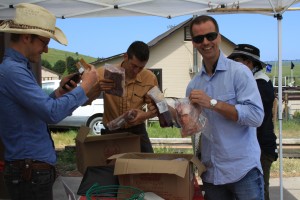Red meat, when done right, can be very green. In a good way.
I had the amazing pleasure of meeting the owners and workers of True Grass Farms a few weekends ago, where we picked up our 1/16th of a cow, and shared a plate and glass with the other proud owners of our shared bovine at their second “Harvest Festival”. Here’s Part I of my journey to own a (partial) cow.
There were about 20 of us in total, assembled from all around Northern California. We came together from various areas, ranging from Lake Tahoe to Oakland to Half Moon Bay, to share a meal and pick up some beef.
We were also given a tour of the farm, including a walk into the pasture where we were greeted by Steer 101, and other gentle beasts.
It was very clear: these cows are loved, respected, and treated insanely humanly. They are rotated every day to a new pasture, which is good for the cows and good for the land. They are never spooked or shooed, but rather they are gently coaxed to their next grass feast.
And on the menu for lunch? Beef. And lots of it. At one point in my life, I would have found the experience of seeing live cows roaming in the pasture one moment, and eating slices of carpaccio the next, a bit morbid and wrong (I was, after all, against my mothers wishes, a vegetarian from age 10 to 20).
But now, I actually found the whole experience to be, well, ‘honest’. It felt good to know where the beef in our freezer was coming from, and to know that it was raised in a very sustainable and green way, and perhaps more importantly, humanely treated upon slaughter.
I’ve made the decision to eat red meat periodically, which I believe can be done even on a journey to becoming ‘green’. And while I pay a little more per pound for “green beef”, I would rather eat it a little less frequently, but know the acres of land where it once roamed.




